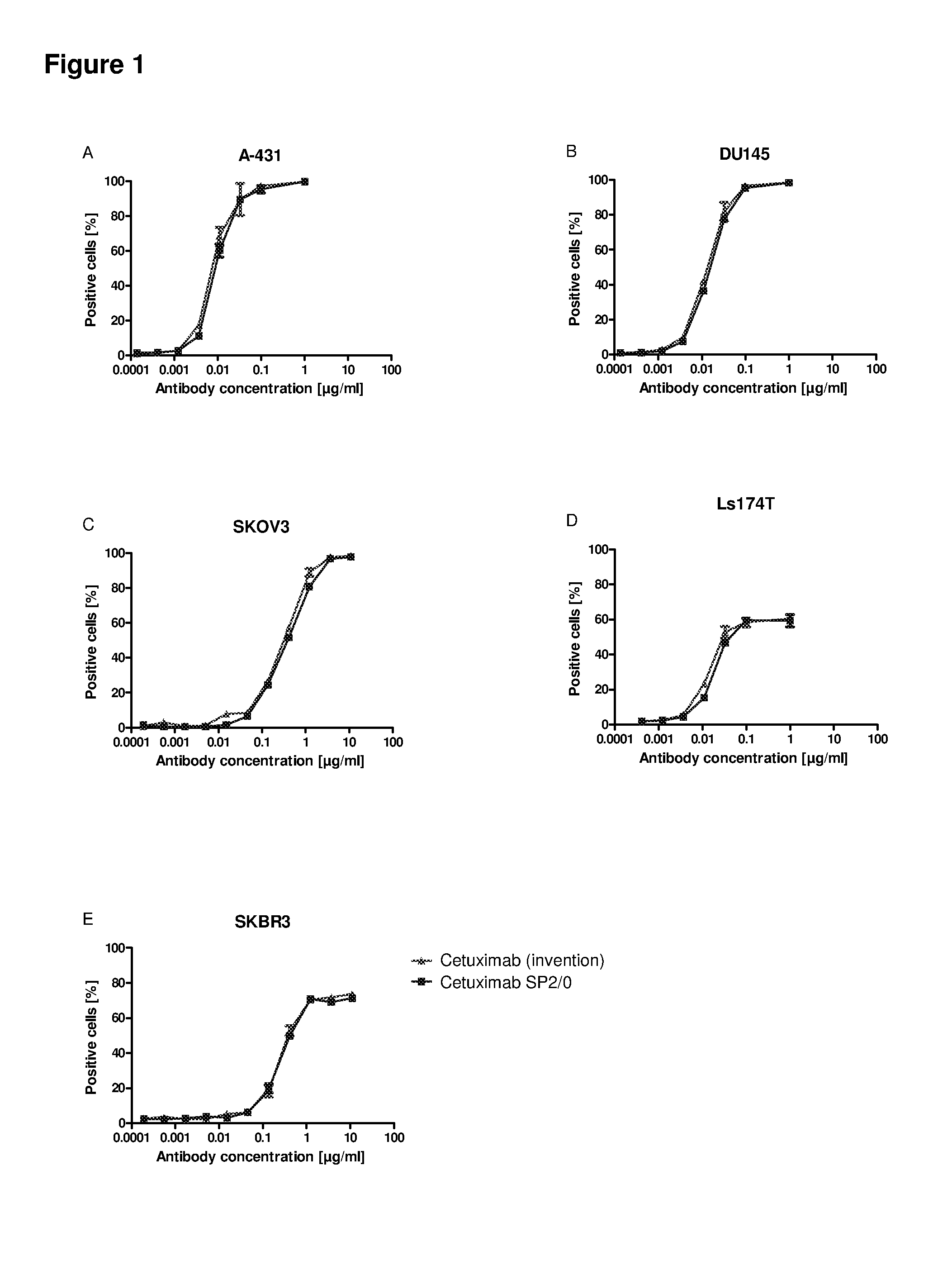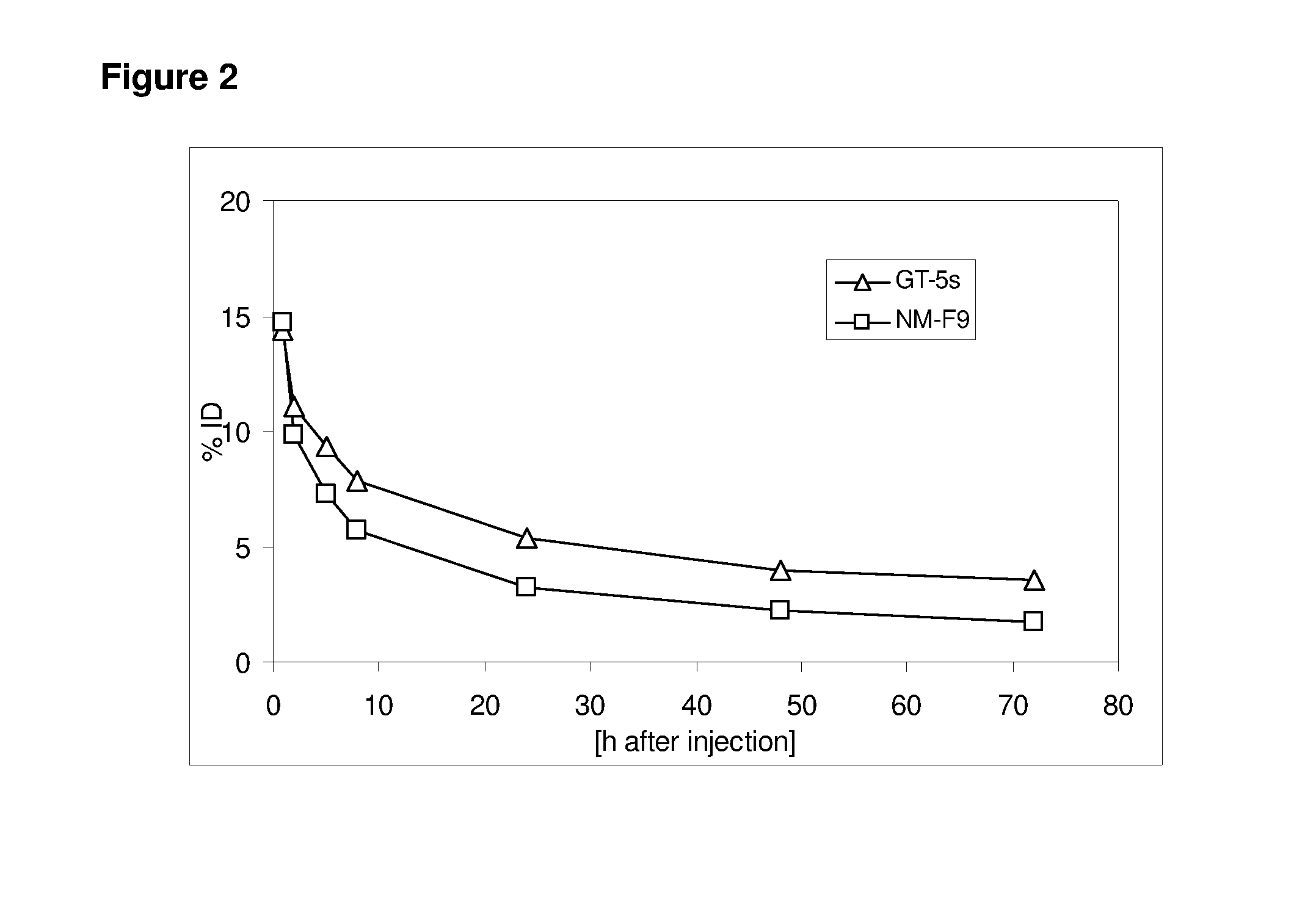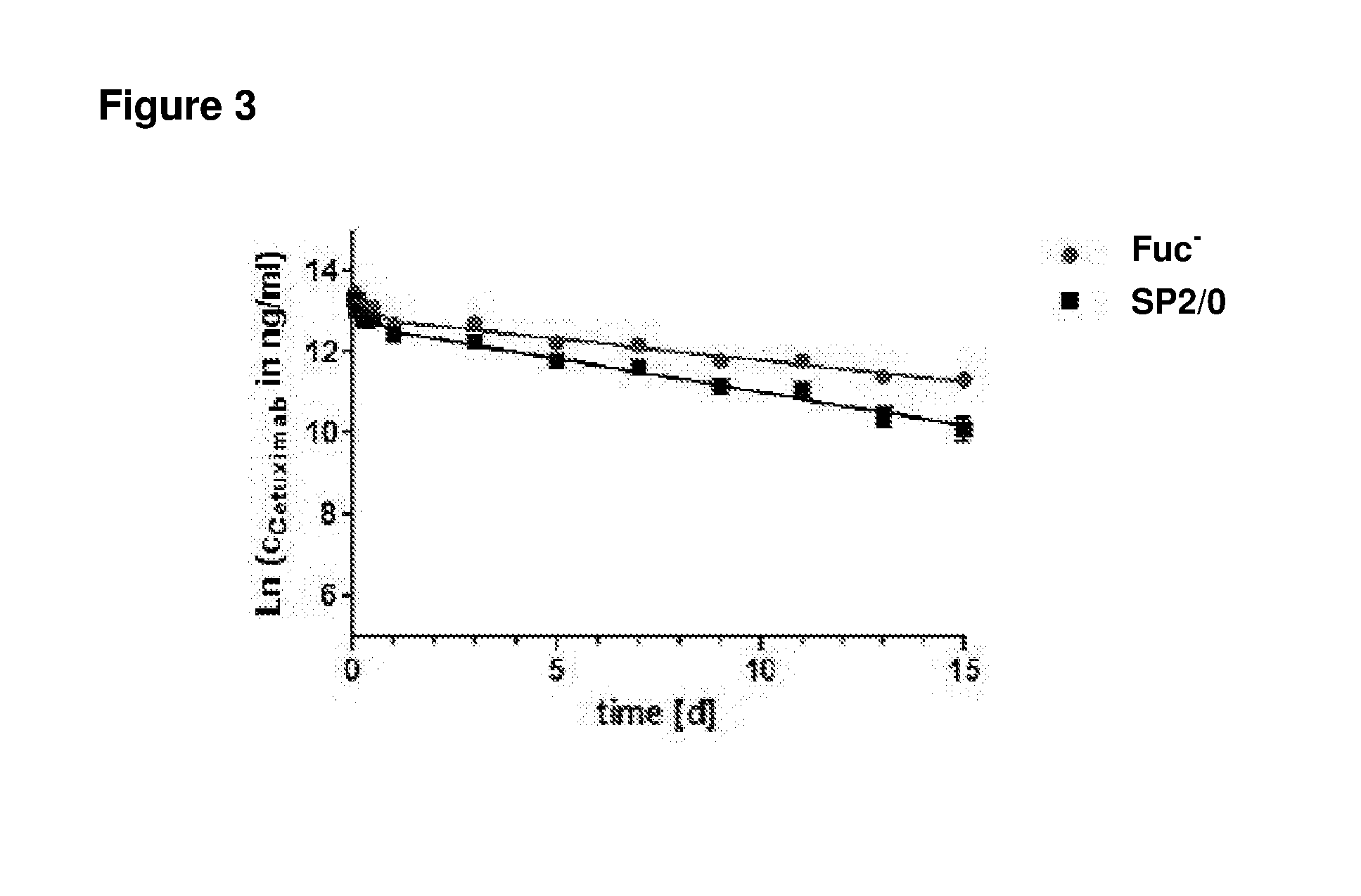Fab-glycosylated antibodies
a technology of fab-glycosylated antibodies and antibodies, which is applied in the field of antibodies, can solve the problems of not being able to attribute antibodies, affecting and modifying antibodies often is detrimental to the biological activity of antibodies
- Summary
- Abstract
- Description
- Claims
- Application Information
AI Technical Summary
Benefits of technology
Problems solved by technology
Method used
Image
Examples
example 1
Glycoprofiling
Anti-EGFR Antibodies
[0266]To characterize the glycosylation pattern of the anti-EGFR antibody Cetuximab expressed in a Fuc− cell line which was derived from the human immortalized blood cell line GT-5s (Fuc+) or in the mouse cell line SP2 / 0 (Erbitux) in more detail glycoprofiling studies were performed. The human / mouse chimeric IgG antibody Cetuximab comprises one N-glycosylation site in framework region 3 of the heavy chain variable region and one N-glycosylation site in the heavy chain constant region 2.
[0267]The antibodies were cleaved with papain resulting in the generation of one Fc fragment and two Fab fragments. Separation of the fragments was performed employing affinity chromatography on a protein A solid phase which binds Fc fragments, but not Fab fragments. After separation of the Fc from the Fab part, the N-glycans of each fragment were applied for glycoprofiling.
[0268]For glycoprofiling, the intact N-glycans were released from the protein core and the redu...
example 2
Antigen Binding Studies
Antigen ELISA
[0277]A specific antigen ELISA (enzyme linked immunosorbent assay) was developed for the anti-EGFR antibody Cetuximab with the commercially available antigen EGFR immobilized on Maxisorp 96 well plates. Coated wells were blocked with 2% BSA in PBS to prevent unspecific binding of anti-bodies. Anti-EGFR antibodies, diluted in 1% BSA / PBS, were incubated to the immobilized antigen for binding and detected by an enzyme-labeled secondary anti-human IgG antibody. The enzyme POD converts the substrate TMB into a dye, which was quantified photometrically after acidification with diluted sulfuric acid at 450 nm.
[0278]Cetuximab expressed in mouse SP2 / 0 cells (Erbitux (Merck)) was used for calibration in the range of 1 to 10 ng / ml. Samples comprising Cetuximab glycosylated according to the invention were diluted to 4 and 8 ng / ml and compared to the calibration curve (quadratic equation fit). The results of different Cetuximab probes show that binding of both...
example 3
Circulation Half-Life of Differently Glycosylated Antibodies
[0293]To test the circulation half-life of differently glycosylated antibodies, a pharmacokinetic assay was performed.
[0294]For this assay, 15 μg of protein A-purified anti-TA-Muc1 antibody Pankomab were injected into rats and the amount of antibody in the rat's serum was determined at specific time points. Pankomab expressed in GT-5s cells was compared to Pankomab expressed in the human immortalized blood cell line NM-F9 (DSM ACC2606 disclosed e.g. in WO 2005 / 017130 A; Fuc+, sialic acid). The results are shown in FIG. 2.
[0295]As can be seen, antibodies having a high degree of sialylation at the Fab part (GT-5s) have a much higher circulation half-life than antibodies having a low sialylation degree (NM-F9).
[0296]In a further pharmacokinetic assay, the circulation half-life of the anti-EGFR antibody Cetuximab expressed in a Fuc− cell line derived from GT-5s cells and expressed in mouse SP2 / 0 cells was tested in an in vivo c...
PUM
 Login to View More
Login to View More Abstract
Description
Claims
Application Information
 Login to View More
Login to View More - R&D
- Intellectual Property
- Life Sciences
- Materials
- Tech Scout
- Unparalleled Data Quality
- Higher Quality Content
- 60% Fewer Hallucinations
Browse by: Latest US Patents, China's latest patents, Technical Efficacy Thesaurus, Application Domain, Technology Topic, Popular Technical Reports.
© 2025 PatSnap. All rights reserved.Legal|Privacy policy|Modern Slavery Act Transparency Statement|Sitemap|About US| Contact US: help@patsnap.com



